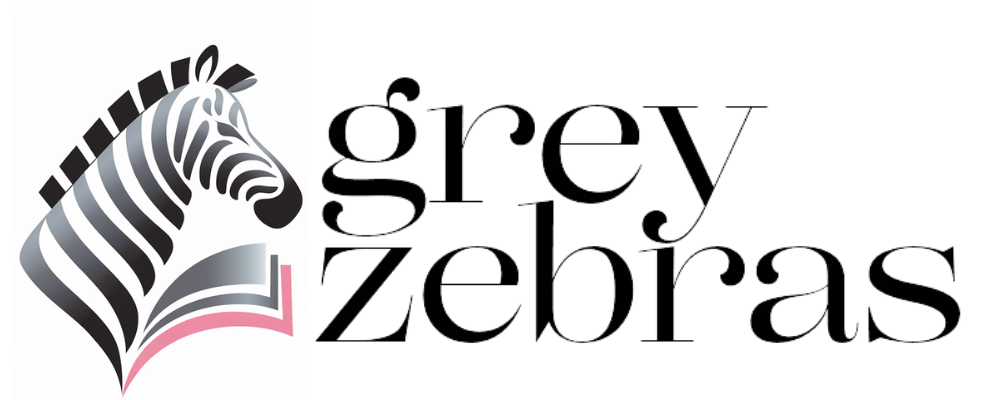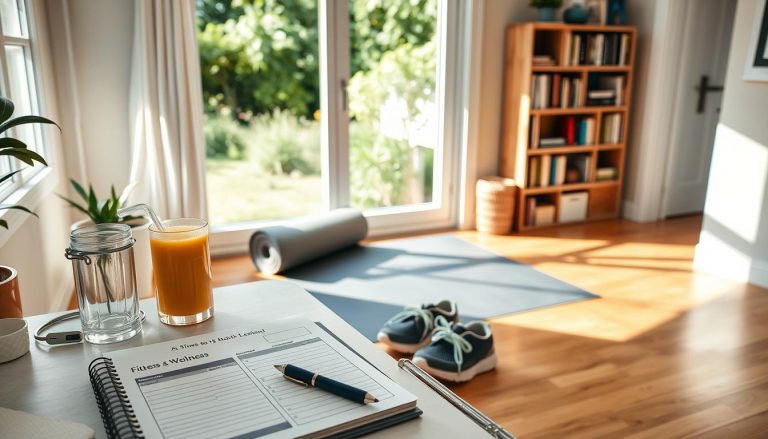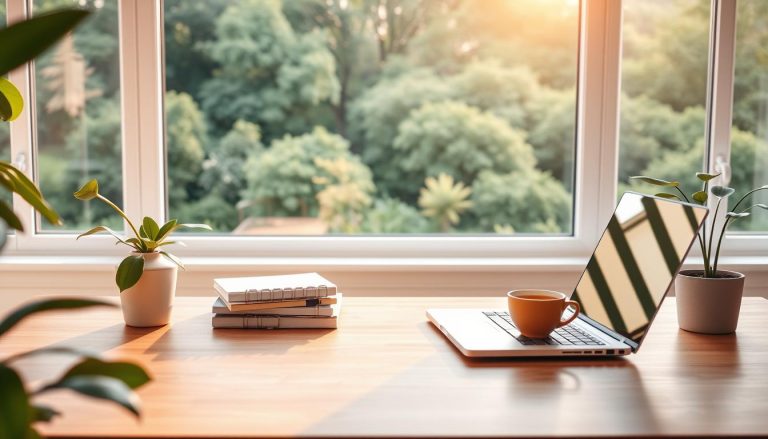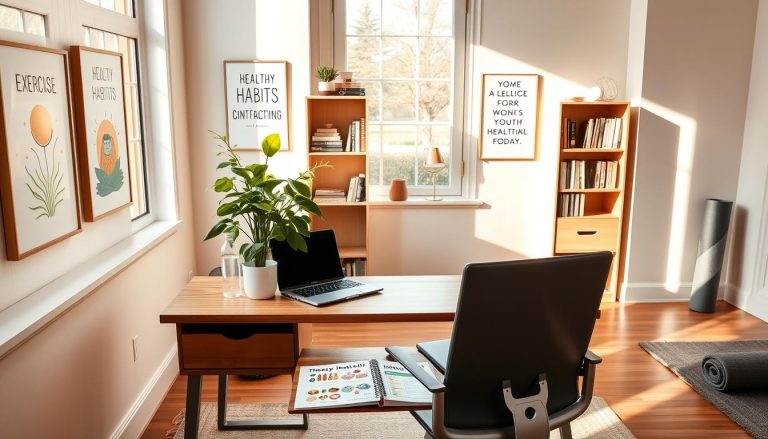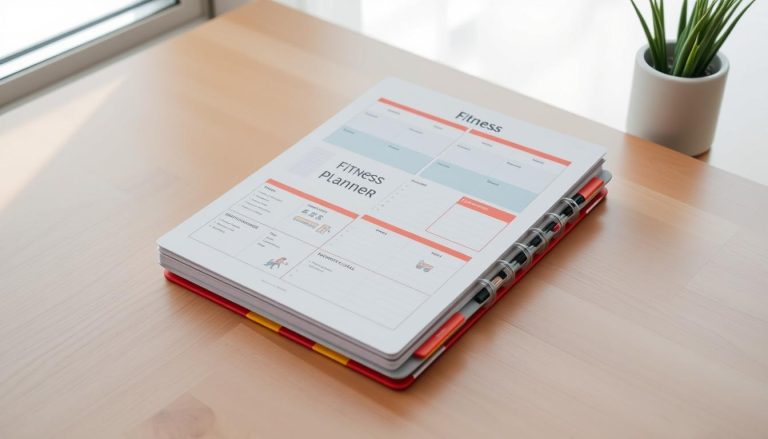Heal from Trauma with Art Journaling
Trauma can be a life-altering experience, affecting individuals in profound ways. The journey towards recovery can be long and challenging, but there are innovative approaches that offer hope and healing pathways. One such method gaining attention is art journaling, a creative process that combines visual art and journaling to express and process emotions.
By leveraging the expressive qualities of art and the reflective nature of journaling, individuals can tap into their inner world, exploring and understanding their trauma in a safe and constructive manner. This approach not only fosters emotional release but also promotes self-discovery and empowerment.
Key Takeaways
- Art journaling serves as a creative outlet for expressing emotions related to trauma.
- It combines the therapeutic benefits of art-making and reflective journaling.
- This practice can lead to significant emotional release and healing.
- Art journaling promotes self-discovery and personal empowerment.
- It’s a versatile tool that can be adapted to individual needs and preferences.
Introduction to Healing through Art Journaling
For those seeking solace from trauma, art journaling offers a creative pathway to healing. This process combines visual art-making and journaling to provide an expressive outlet that can be particularly helpful for individuals dealing with trauma.
What is Art Journaling?
Art journaling is a form of expressive arts therapy that involves creating art within a journal. It’s a versatile and personal way to express emotions, thoughts, and experiences. By combining images, colors, textures, and words, individuals can convey complex feelings in a non-verbal manner, which can be especially helpful when verbalizing traumatic experiences is challenging.
This practice is not about creating perfect art; it’s about using creativity as a means of self-expression and healing. The freedom to experiment and make mistakes is a core aspect of art journaling, allowing individuals to explore their emotions without fear of judgment.
The Role of Creativity in Healing
Creativity plays a significant role in the healing process, particularly for those who have experienced trauma. Engaging in creative activities like art journaling can help individuals process their emotions and develop a sense of control and empowerment. Through art therapy for trauma healing, individuals can begin to reframe their experiences and work towards recovery.
The act of creating art can be meditative, providing a calming and focusing effect that can help reduce stress and anxiety associated with trauma. Moreover, the creative process can foster a sense of accomplishment and pride in one’s work, enhancing self-esteem.
Overview of Trauma and Its Effects
Trauma can have profound effects on an individual’s mental, emotional, and physical well-being. It can result from a single event or a series of experiences, leading to feelings of overwhelm, anxiety, and disconnection. The impact of trauma can be far-reaching, affecting daily life, relationships, and overall health.
Understanding trauma and its effects is crucial for developing effective healing strategies. Art journaling, as a form of expressive therapy, can be a valuable tool in this process, offering a means to express and process traumatic experiences in a safe and supportive environment.
Benefits of Art Journaling for Trauma Recovery
For many, art journaling becomes a vital tool in the journey towards healing and recovery from trauma. It provides a creative outlet that allows individuals to express their feelings and emotions in a safe and controlled environment.
Emotional Expression Through Art
Art journaling enables individuals to convey complex emotions through various art forms, such as painting, drawing, or collage. This form of expression can be particularly helpful for those who struggle to verbalize their feelings.
Gaining Clarity and Insight
Through the process of creating art, individuals can gain a deeper understanding of their emotions and experiences. This clarity can be instrumental in the healing process, allowing individuals to process their trauma more effectively.
Building Resilience
The act of creating art can also foster resilience. By expressing their emotions and experiences through art, individuals can develop coping strategies and learn to navigate their feelings in a healthier way.
| Benefit | Description | Impact on Trauma Recovery |
|---|---|---|
| Emotional Expression | Allows for the expression of complex emotions through art. | Facilitates processing and understanding of traumatic experiences. |
| Clarity and Insight | Provides a deeper understanding of emotions and experiences. | Enhances the ability to cope with trauma. |
| Building Resilience | Fosters the development of coping strategies and healthier emotional navigation. | Supports long-term recovery and well-being. |
By incorporating art journaling into their recovery process, individuals can experience significant benefits that support their journey towards healing trauma with creativity and art journaling for emotional healing.
Supplies Needed for Art Journaling
Art journaling, a powerful tool for trauma recovery, begins with gathering the right materials. The process of selecting and using these supplies can be therapeutic in itself, setting the stage for a meaningful journey of healing through art. As you prepare to start, consider what materials will best support your creative expression and comfort.
Choosing the Right Journal
The foundation of your art journaling practice is the journal itself. When choosing a journal, consider the size, paper quality, and binding. A larger journal provides more space for creativity, while a smaller one is more portable. Look for a journal with paper that can handle various media, such as paints, markers, and collage elements.
Essential Art Supplies
Beyond the journal, several art supplies can enhance your journaling experience. These include a variety of markers, colored pencils, paints, and materials for collage. The key is to experiment with different tools to find what works best for you.
- Markers and colored pencils for drawing and coloring
- Watercolor or acrylic paints for adding vibrant colors
- Magazines, scissors, and glue for collage elements
- Other embellishments like stickers, stamps, or washi tape
Digital vs. Traditional Art Journaling
The debate between digital and traditional art journaling comes down to personal preference. Traditional journaling offers a tactile experience, while digital journaling provides flexibility and accessibility. Some may prefer a combination of both, using digital tools to plan or store their work alongside a physical journal.
| Aspect | Traditional | Digital |
|---|---|---|
| Tactile Experience | Offers a hands-on, sensory experience | Lacks tactile feedback |
| Accessibility | Can be bulky to carry around | Easily accessible on digital devices |
| Flexibility | Limited by physical space | Endless digital space and easy editing |
Getting Started with Art Journaling
For individuals seeking to heal from trauma, art journaling can be a powerful tool, fostering emotional expression and resilience. As you begin this journey, it’s essential to establish a foundation that supports your creative and therapeutic process.
Creating a Safe Space
Creating a safe and comfortable environment is crucial for effective art journaling. This space should be free from distractions and interruptions, allowing you to fully immerse yourself in the creative process.
- Choose a quiet, dedicated area for journaling.
- Ensure good lighting that makes you feel comfortable.
- Keep your journaling supplies organized and within reach.
Setting Intentions for Your Journal
Setting clear intentions can help guide your art journaling practice, giving it direction and purpose. Consider what you hope to achieve through journaling, whether it’s to process emotions, explore your creativity, or simply relax.
To set your intentions:
- Reflect on your goals for art journaling.
- Write down your intentions in your journal.
- Refer back to these intentions periodically to track your progress.
Overcoming Creative Blocks
It’s common to encounter creative blocks or feel uncertain about how to start or continue your art journaling practice. Experimenting with different techniques and being gentle with yourself can help overcome these challenges.
- Try different art supplies and materials.
- Use prompts or exercises to spark creativity.
- Practice regularly to build confidence and momentum.
By creating a safe space, setting clear intentions, and being proactive about overcoming creative blocks, you can establish a fulfilling art journaling practice that supports your journey towards healing and self-discovery.
Techniques for Effective Art Journaling
Art journaling is a versatile medium that encompasses a range of techniques, from collage and doodling to writing prompts, each offering unique benefits for trauma recovery. By exploring these different methods, individuals can discover what works best for them, tailoring their practice to their personal healing journey.
Collage and Mixed Media
Collage and mixed media techniques involve combining different materials and textures to create visually rich and emotionally resonant pages. This can include magazine cutouts, fabric, found objects, and various art supplies. The process of selecting and arranging these elements can be therapeutic, allowing individuals to express complex emotions in a non-verbal way.
To get started with collage, gather a variety of materials and let your intuition guide your selections. You might begin with a theme or color palette in mind, or simply allow the materials to dictate the direction of your piece.
Doodle and Sketch Therapy
Doodling and sketching can be powerful tools for self-expression and relaxation. These simple, repetitive motions can help calm the mind and access deeper states of consciousness. The act of creating without a specific goal in mind can be particularly liberating, allowing for a flow state that is both calming and creatively stimulating.
To incorporate doodle and sketch therapy into your art journaling, start with simple shapes and patterns. As you become more comfortable, you can experiment with more complex designs and techniques.
Writing Prompts to Spark Creativity
Writing prompts can be a valuable addition to your art journaling practice, helping to spark creativity and inspire new insights. These prompts can be as simple as a single word or phrase, or as complex as a detailed scenario or question. The key is to allow your writing to flow freely, without judgment or self-editing.
Some examples of writing prompts include: “What am I grateful for today?” “Describe a memory that is significant to you.” “What are your hopes and fears for the future?” By responding to these prompts, you can tap into your inner world and gain a deeper understanding of yourself.
Integrating Mindfulness in Art Journaling
Art journaling becomes even more effective when paired with mindfulness practices, fostering a deeper connection to one’s inner self. By integrating mindfulness into art journaling, individuals can enhance their emotional expression and healing journey. This synergy between mindfulness and creative expression can lead to a more profound and lasting recovery from trauma.
Mindfulness Practices to Incorporate
Mindfulness practices can be seamlessly woven into the art journaling process. Techniques such as body scan meditation and mindful walking can help individuals cultivate a greater awareness of their body and emotions, which can then be expressed through art.
For example, beginning an art journaling session with a short body scan can help identify areas of tension, guiding the creative process towards releasing these tensions. Additionally, practices like gratitude journaling can foster a positive mindset, influencing the tone and content of the art journaling.
Breathing Exercises Before Creating
Breathing exercises are a simple yet powerful tool to calm the mind and prepare the body for the creative process. Techniques such as diaphragmatic breathing can help reduce stress and anxiety, creating a conducive environment for art journaling.
To incorporate breathing exercises into your art journaling routine, start by dedicating a few minutes to focused breathing. This can involve inhaling deeply through the nose, holding the breath for a moment, and exhaling slowly through the mouth. This practice can help center the individual, making the art journaling process more intentional and meaningful.
Reflecting on Your Work
Reflection is a crucial aspect of the healing process in art journaling. Taking the time to reflect on the artwork created can provide insights into one’s emotional state and progress in healing.
After completing an art journaling session, take a moment to reflect on the artwork. Ask yourself questions like: What emotions did the process evoke? What themes or symbols emerged in the artwork? Reflecting on these aspects can deepen understanding and facilitate further healing.
Personal Stories of Healing through Art Journaling
Art journaling has emerged as a powerful tool for emotional healing, with numerous individuals sharing their stories of resilience and recovery. These personal narratives not only highlight the effectiveness of art journaling in trauma recovery but also inspire others to embark on their own healing journeys.
Case Studies of Successful Recovery
Numerous case studies have documented the successful recovery of individuals using art journaling as a therapeutic tool. For instance, a study published in the Journal of Clinical Psychology found that participants who engaged in art-making activities experienced a significant reduction in symptoms of anxiety and depression.
Key findings from such case studies include:
- Reduced symptoms of PTSD
- Improved emotional regulation
- Enhanced self-awareness
Testimonials from Art Journalers
Many art journalers have shared their personal testimonials, highlighting the positive impact of this practice on their mental health. One art journaler noted,
“Art journaling has been my sanctuary, a place where I can express my feelings without fear of judgment.”
Such testimonials underscore the therapeutic benefits of art journaling.
How Community Supports Healing
The role of community in supporting healing through art journaling cannot be overstated. Online forums, local workshops, and social media groups have created spaces where individuals can share their work, receive feedback, and connect with others who are on similar journeys.
The sense of community fosters a supportive environment that is crucial for sustained healing and growth. Participants in art journaling communities often report feeling seen, heard, and understood, which are essential components of the healing process.
Art Journaling Workshops and Resources
The journey of using art to heal from trauma can be significantly enriched by engaging with local and online art journaling communities and resources. As you continue to explore the therapeutic benefits of art journaling, you’ll find that additional support and guidance can enhance your healing process.
Finding Local and Online Workshops
Workshops, whether local or online, offer a structured environment to explore art journaling with guidance. They provide an opportunity to learn new techniques, gain insights from experienced practitioners, and connect with others who share similar interests and goals. To find workshops, consider the following resources:
- Local art schools and community centers
- Online platforms like Meetup.com or Eventbrite
- Social media groups focused on art journaling and trauma healing
Online workshops are particularly beneficial for those with busy schedules or limited access to local resources. They offer flexibility and the comfort of participating from your own space.
Recommended Books on Art Journaling
For those who prefer learning through reading, there are numerous books on art journaling that can provide valuable insights and techniques. Some highly recommended titles include:
- “The Art Journaling Handbook” by Dare
- “Art & Soul” by Martina Flor
- “The Artist’s Way” by Julia Cameron
These books not only offer practical advice on art journaling techniques but also explore the deeper aspects of creativity and personal growth.
Online Communities and Forums
Engaging with online communities can be a powerful way to connect with others who are on a similar journey. Online forums and social media groups dedicated to art journaling can offer support, inspiration, and a sense of belonging. Some popular platforms include:
- Facebook groups focused on art journaling
- Reddit forums dedicated to art therapy and journaling
- Instagram communities using hashtags like #artjournaling
As Shauna Richardson, an art therapist, once said,
“The act of creating is a form of self-care and a powerful tool for healing.”
Engaging with these communities can amplify the healing benefits of art journaling.
How to Maintain a Consistent Practice
Consistency is key when it comes to using art journaling as a tool for healing from trauma. By incorporating art journaling into your daily or weekly routine, you can enhance its therapeutic benefits and support your ongoing recovery.
Setting a Routine for Journaling
Establishing a regular time and space for art journaling is crucial. Choose a quiet, comfortable spot where you can focus on your journaling without distractions. Consider setting a consistent schedule, such as first thing in the morning or before bed, to make journaling a habit.
Tips for Staying Motivated
Staying motivated can be challenging, but there are several strategies you can use. Experiment with different techniques, such as collage, doodling, or writing prompts, to keep your journaling practice fresh and engaging. You can also set small, achievable goals for your journaling, like completing a certain number of pages within a set timeframe.
Celebrating Your Progress
Celebrating your progress is an important part of maintaining motivation. Reflect on how far you’ve come by looking back at your earlier journal entries and comparing them to your current work. You can also celebrate milestones, such as completing a challenging page or reaching a certain number of journaling days in a row.
| Motivation Strategy | Description | Benefit |
|---|---|---|
| Experimenting with Techniques | Trying new methods like collage or doodling | Keeps journaling fresh and engaging |
| Setting Achievable Goals | Setting small goals, like completing a certain number of pages | Provides a sense of accomplishment and motivation |
| Reflecting on Progress | Looking back at earlier journal entries | Helps to see how far you’ve come and encourages continued practice |
Overcoming Challenges in Art Journaling
While art journaling is a powerful tool for healing, it’s not without its challenges, including perfectionism and emotional triggers. As individuals embark on this creative journey, they may encounter various obstacles that can hinder their progress. Understanding these challenges and learning how to overcome them is crucial for a fulfilling art journaling experience.
Dealing with Perfectionism
Perfectionism can be a significant barrier to the creative process. When art journalers strive for perfection, they can become overly critical of their work, leading to frustration and disappointment. To overcome this, it’s essential to adopt a mindset that values the process over the product. Focusing on the journey rather than the destination allows for a more enjoyable and liberating experience.
- Set realistic expectations for your art journaling practice.
- Embrace mistakes as opportunities for growth and learning.
- Practice self-compassion and acknowledge that your worth isn’t tied to your art.
Faced Emotional Triggers
Art journaling can sometimes uncover deep-seated emotions or memories, which can be challenging to confront. When faced with emotional triggers, it’s crucial to approach them with care and compassion. Creating a safe space for expression and having support systems in place can help navigate these difficult moments.
| Strategies for Facing Emotional Triggers | Description |
|---|---|
| Grounding Techniques | Use deep breathing exercises or mindfulness practices to stay present. |
| Support Systems | Reach out to trusted friends, family, or a therapist for support. |
| Self-Care | Engage in activities that promote relaxation and well-being. |
Navigating Setbacks
Setbacks are an inevitable part of any creative journey. Whether it’s a lack of inspiration or feeling stuck, it’s essential to have strategies in place to overcome these challenges. Revisiting your intentions and reminding yourself of your goals can help you stay on track.
- Take a break and step away from your journal to clear your mind.
- Explore different techniques or mediums to reignite your creativity.
- Reflect on your progress and celebrate your achievements.
By understanding and addressing these challenges, art journalers can continue to grow and heal through their creative practice, leveraging the benefits of trauma recovery through art and healing trauma with creativity.
Conclusion: Transforming Trauma into Art
As we’ve explored throughout this article, art journaling is a powerful tool for healing from trauma. By leveraging art therapy for trauma healing, individuals can express and process their emotions in a creative and meaningful way. This form of expressive arts therapy for trauma allows people to tap into their inner strength and resilience.
Embracing the Journey
If you’re considering art journaling as a means to heal, know that you’re taking the first step towards a transformative journey. It’s essential to be patient and compassionate with yourself as you navigate this process. With consistent practice, you’ll begin to notice the positive impact of art journaling on your mental well-being.
Long-term Healing
The benefits of art journaling extend far beyond the initial stages of healing. As you continue to practice, you’ll experience long-term growth and development, leading to a more fulfilling life. By incorporating art journaling into your self-care routine, you’ll be better equipped to handle life’s challenges and cultivate a deeper sense of inner peace.
By embracing art journaling, you’ll unlock the potential for profound healing and growth, ultimately transforming your trauma into a powerful work of art.
